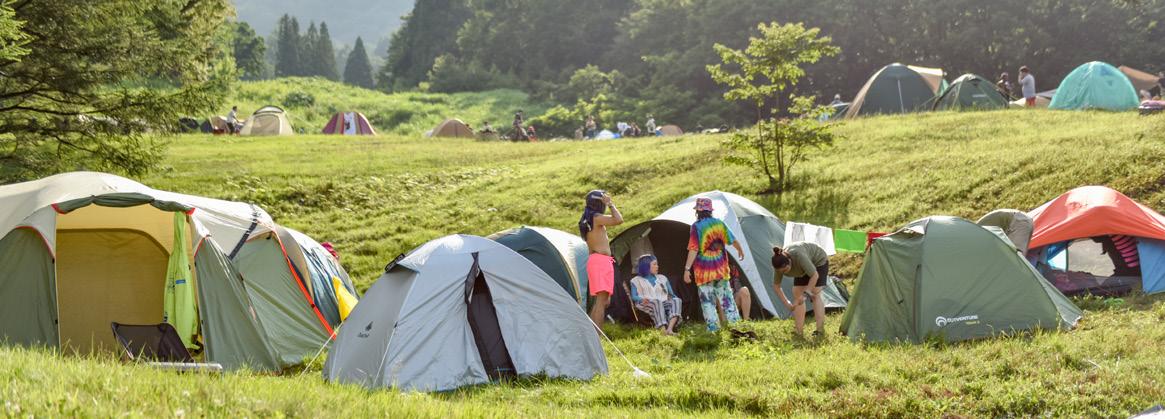
45 minute read
Summer Music Festivals
Sounds of Summer
2021 SUMMER MUSIC FESTIVALS IN JAPAN
Advertisement
Photo by Noriteru Ino
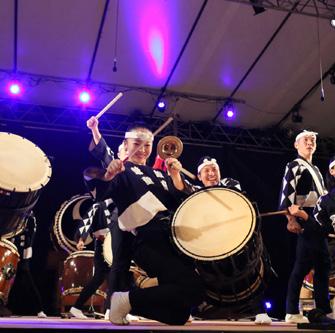

MUSIC FESTIVALS
FUJI ROCK
After a year hiatus, Fuji Rock is back this summer and is going local featuring a lineup of all homegrown acts. Normally held at Naeba Ski Resort in late July, the event has moved to August this year and is planning for about 65% of normal capacity, which means less crowds and more elbow room for Fuji Rockers and campers.
Morio Takizawa, who has been Campground Director for Fuji Rock for 15 years and is the editor for Outdoor magazine says there is a renewed dedication to a “Leave no trace” policy for campers and festival-goers and promoting self-reliance for campers who are asked to bring everything they need and take everything out with them.
“We are expecting a more relaxed vibe this summer, but campers do need to be prepared for hot, unpredictable weather,” he says.
“Reusable masks, rechargeable batteries, alcohol spray, reusable water bottles, camping gear and rain gear are all advised. We ask campers to solo camp or to camp with people they live with,” he adds.
There are no camping rentals available but there is a help desk for campers in need of assistance. Food stalls will be more spread out this year and organizers will be taking disease control precautions that they expect will be the new normal at festivals moving forward. Campground reservations are now available with ticket purchases. Check out the website for more details and lineup updates. For those wondering about Asagiri Jam 2021, no announcement has been made, but you can check for updates at
asagirijam.jp.
When: Aug. 20-22 Where: Naeba Ski Resort, Niigata Web: fujirockfestival.com
SUPERSONIC
Summersonic has been canceled due to the Tokyo Olympics, but the organizers have announced Supersonic, a more electronic version of the urban music festival, coming in September. When: Sept. 18-19 Where: Tokyo and Osaka Web: supersonic2020.com
M FESTIVAL
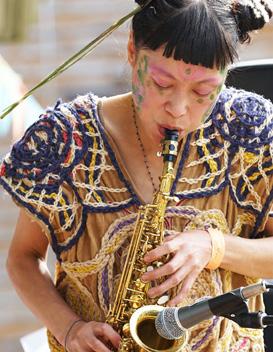
M Festival is back for its second year in Myoko. The event is billed as a celebration of music, art, wellness and healthy lifestyles with a diverse range of music styles. When: Sept. 25-26 Where: Ikenotaira Resort, Myoko, Niigata Web: m-festival.com
P ho tos by Ear t h Celebration Committee
EARTH CELEBRATION
Kodo, the world-renowned taiko group that calls Sado Island home, held their annual Earth Celebration last year as a live-stream-only event. There will be an official announcement soon whether they will go live or livestreamed so visit their website for updates. Two exciting shows are planned: on Saturday Tomohiro Mitome will celebrate his 30th anniversary as a Kodo member with a special celebration and some special guests. Sunday will feature a performance by Kodo’s all-stars.
There will also be live-streamed workshops and lectures, promotion for followers to share Earth Celebration memories on Instagram and One Earth Music, where fans and musicians can play and share music compositions by Kodo. Looking ahead, 2022 will be the Earth Celebration's 35th anniversary and Kodo’s 40th. When: Aug. 20-22 Where: Ogi, Sado Island, Niigata Web: earthcelebration.jp
OTHER MUSIC EVENTS
Rock in Japan Festival
When: Aug. 7-9 and Aug. 14-15 Where: Hitachi Seaside Park, Ibaraki Web: rijfes.jp
Rising Sun Rock Festival in Ezo
When: Aug. 13-14 Where: Ishikari, Hokkaido Web: rsr.wess.co.jp/2021/
Music Circus
When: Sept. 4-5 Where: Osaka Sennen Rinku Park, Osaka Web: music-circus.jp
Sunshine Festival
When: Sept. 18-20 Where: Yuzawa, Niigata Web: sunshinefestival.jp
M Fest

in 2021
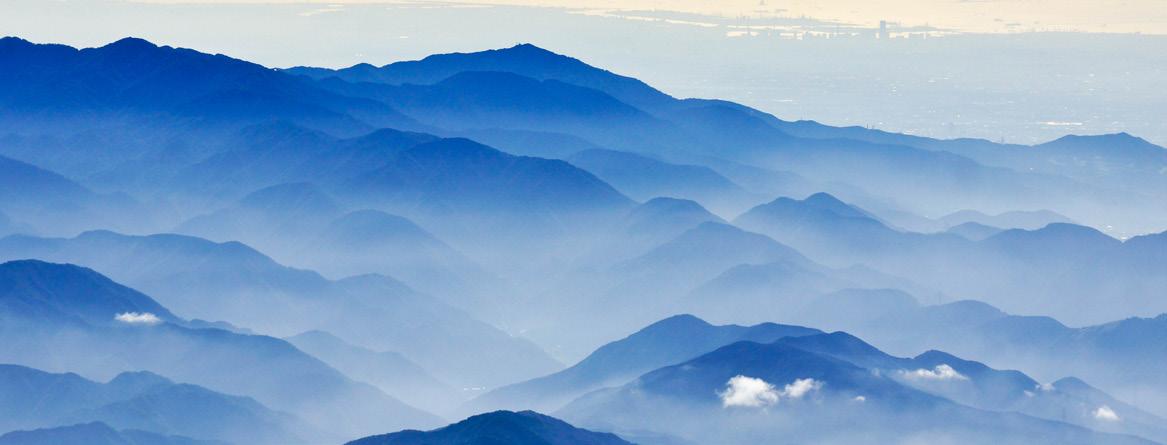
BY GARDNER ROBINSON
If you live in Japan and Mt. Fuji is still on your bucket list, the pandemic could be a panacea for procrastination this summer. The trails to the summit of Japan’s most iconic mountain may never again be so free of crowds. So in the words of Phil Knight and the four veteran Mt. Fuji Climbing guides we talked to about the upcoming climbing season—just do it!
Life is full of ups and downs, but lately it feels like we’ve been trapped in that old Richard Fariña novel, “Been Down So Long It Looks Like Up to Me.” Your favorite restaurants and taprooms have been closed; you can’t remember the last time you saw live music or went on a proper vacation. You’ve got cabin fever and itchy feet. Well, as any mountain lover will tell you, “Sometimes you just need a change in altitude.”
The 2021 climbing season may be best time to climb Mt. Fuji in decades. Crowds will be thinned on the trails and in the huts due to inbound travel restrictions and others staying home as Japan slogs forward with vaccination goals. We talked to four Mt. Fuji climbing guides about what this season will mean to those making the pilgrimage and how to get the most out of the experience.

“Today is your day! Your mountain is waiting, so… get on your way!” —Dr. Seuss
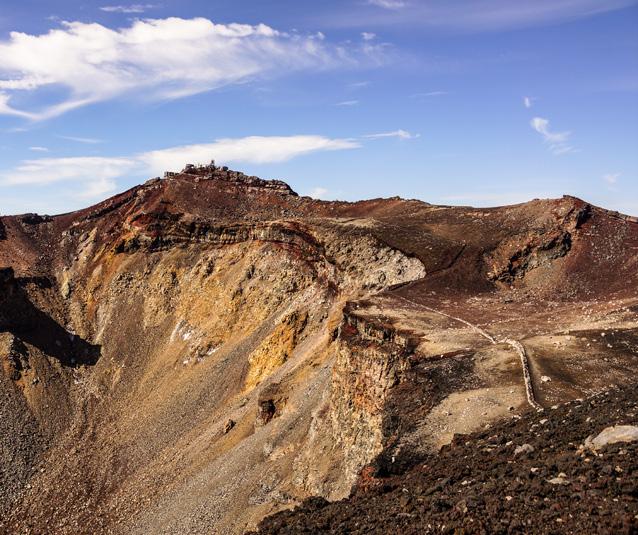

Brent Potter is head guide at Fuji Mountain Guides, which started in 2007 as Mt. Fuji’s first English-speaking guide service. Each of his guides do 32 to 40 climbs a season and they have guided more than 5,000 guests safely to the summit. August is the most popular time to climb when weather is most stable and the summit the least cold—but it's also the most crowded, which, he admits can take away from the experience.
“To avoid crowds and maximize good weather, I always recommend climbing in mid-to-late September, but weather gets more unstable as the summer goes on so keeping a careful eye on the forecast is key,” he says.
“On a typical season, we guide from June 25 to Oct. 15. While certain trails officially close after Sept. 5, we are able to keep hiking later in the season on the Subashiri Trail,” he adds.
After Sept. 5, huts close and trail markers are taken down. There is no medical support in the event of an injury or evacuation so climbers need to be self-sufficient, or better yet, go with an experienced guide.
“Foreign visitors account for roughly 30% of the climbers on Mt. Fuji so 2021 could be the least crowded time to climb in 50 years. This could be the last chance in our lifetimes that Fuji is so peaceful, so don’t miss your chance!” Potter exclaims.


Photo by Whole Earth Nature School Photo by Kanto Adventures

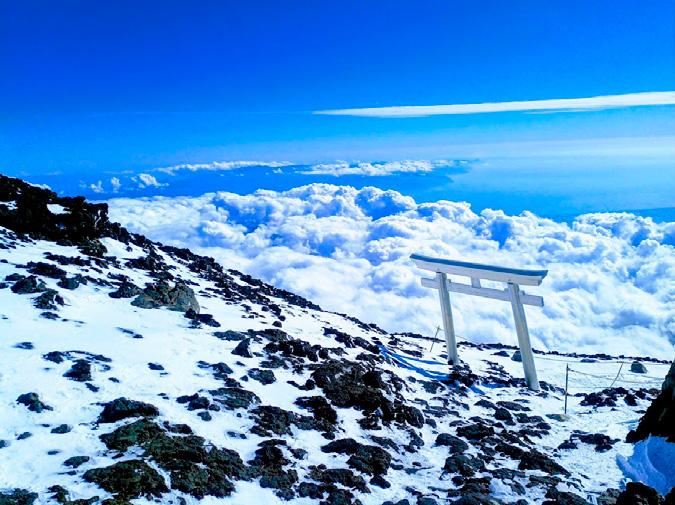
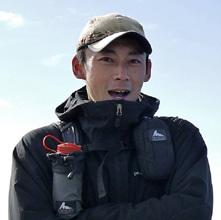
Manabu Futsuki has been guiding on Mt. Fuji for 10 years with his company, Whole Earth Nature School. He also guides guests to the Aokigahara Forest and nearby caves and villages at the foot of Mt. Fuji. Over the past few years he could see Fuji was getting overcrowded during climbing season and since the mountain was officially closed last year he believes it was a good natural recovery period with reduced erosion from trekking, less pollution and better air quality.
“This summer, not only is Japan still closed to inbound visitors, but I also think there will be fewer Japanese people climbing Mt. Fuji, so it will be pretty quiet with fewer hikers and better for the environment,” says Futsuki.
He recommends climbing in small groups of people who ideally live together. During his tours he asks his guests to give other groups plenty of room and wear masks if they are passing others on the trail. He also encourages people to enjoy nature on the hike, not just focusing on getting to the top.
“Look at the vegetation, landscape, clouds, weather and within yourself. If you have a guide with you, it’ll be easier to appreciate these and other parts of the hike, he adds.
—Hermann Buhl
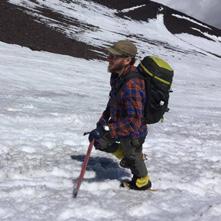
David Niehoff started Kanto Adventures in 2012 with a focus on human-powered outdoor adventures, specifically hiking, mountaineering and rock climbing. He does about 30 to 35 climbs a year with private and group trips starting from the last week of April and continuing through the first week of November. "Personally I prefer October when the snow has fallen on the upper part of the mountain; the air is very clear and the views are amazing during the fall,“ says Niehoff. “Our off-season trips often involve snow and ice, requiring ice axes and crampons to make it up. In summer we take people on one-day and overnight trips via the least crowded routes,” he adds.
His advice for first time climbers? “Have good quality gear. Specifically good boots and rain gear make a huge difference in the experience. Fitness is probably the biggest point affecting how much someone will enjoy it—and the best training for mountain climbing is climbing mountains, so getting out on some hikes with at least 1,000 meters of elevation gained in a day. It will provide huge dividends when climbing something as big as Fuji,” he points out.
Niehoff notes mountain huts are reducing capacity so it is highly likely there will be fewer people on the mountain, potentially reducing the traffic jams that Mt. Fuji is famous for on the most popular routes.
“People come to the mountains to experience nature and solitude, and shuffling along with thousands of people before sunrise is not ideal, so this might be a great time to do it,” he says.

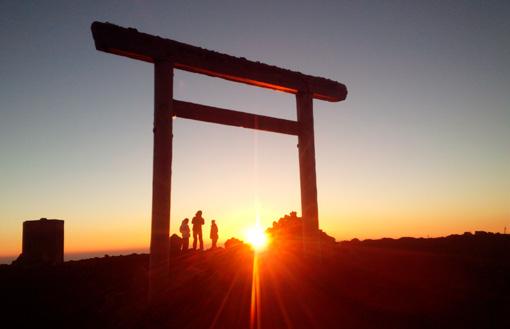


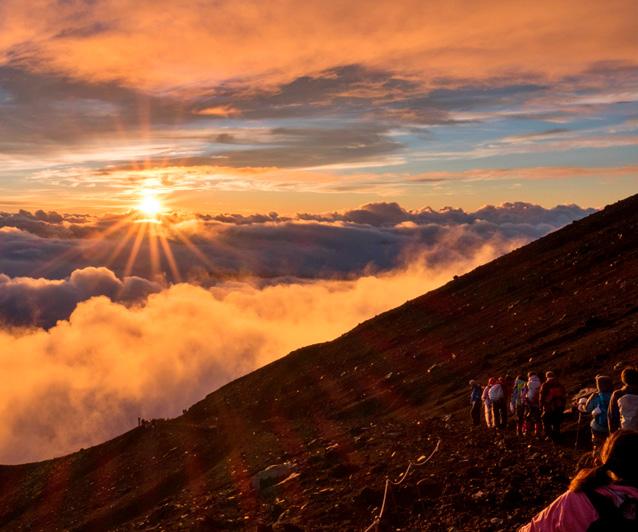
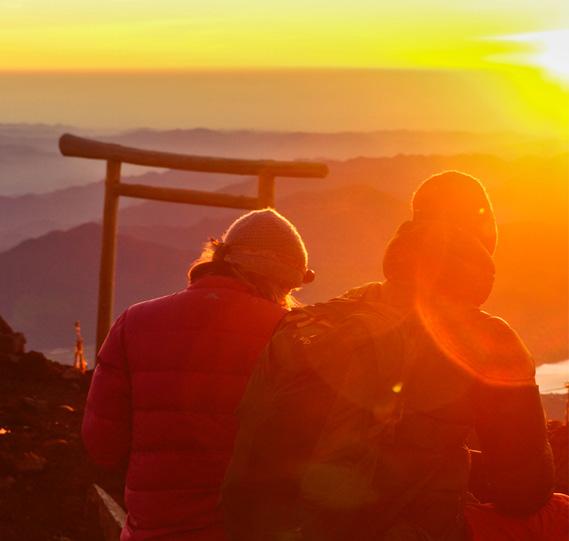
—Sir Ranulph Fiennes
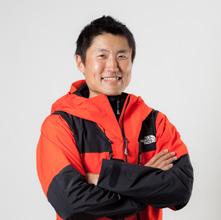
FYG Mountain Guides and head guide Shoji Matsumoto have been doing private climbing tours on Mt. Fuji for clients from all over the world since 2008. They run tours from early July to early September and don’t mix groups so guests can enjoy climbing Mt. Fuji at their own pace without any worries.
Matsumoto has taken guests to the top of Fuji more than 200 times. His climbing schedule varies year to year as he also guides other mountains in Japan. His favorite time on Mt. Fuji is just before and after sunrise.
“On our tours, we don't see the sunrise at the top of the mountain because it’s very crowded. I like to be in a quiet place and feel the changing sky, cloud color, and temperature as the sunrise comes with my whole body,” he says.
His advice for novice climbers is to do it at a time you are usually awake as climbing a mountain with little or no sleep is very hard on the body, increases the likelihood of altitude sickness and reduces alertness, which increases the risk of injury. He also suggests bringing basic mountaineering equipment with you.
“Fuji takes about 12 hours if you do it over two days and is not a mountain for beginners. It is a good idea to climb other mountains beforehand to experience the same length and time on the mountain while getting used to equipment,” he adds. v
Photo by Fuji Mountain Guides
WEB CONNECTION
All guides suggest checking the official Mt. Fuji website for up-to-date COVID-19 guidelines, weather and route information in advance at fujisan-climb.jp.
Fuji Mountain Guides
FYG Mountain Guides
Kanto Adventures
Whole Earth Nature School
Web: wens.gr.jp Head Guide: Manabu Futsuki
Check out the extended article at
OutdoorJapan.com.
Photo by FYG Mountain Guides
Camping in Japan

OUTDOOR JAPAN'S GUIDE TO CAMPING, AUTO CAMPING & GLAMPING IN THE GREEN SEASON
Escape the crowds this summer at more than 3,000 campsites across the country offering everything from free camping with basic tent sites to well-equipped auto campgrounds and luxurious glamping, cabins or cottages. Visit several spots traveling by camper van and enjoy the ultimate freedom of the road.
HOKKAIDO
Yoteizan Makkari Campsite
This campsite at the foot of Mt. Yotei is ideal for hikers (especially the Makkari Course). Accommodation: Camping, Auto Camping English-Speaking Staff: No Rental Equipment: Tents, sleeping bags BBQ Facilities: Yes. Firewood also available. Access: Two hours and 20 minutes by bus from Sapporo Station. Web: vill.makkari.lg.jp
Sunayu Campsite
Lake Kussharo was named by the Ainu because hot springs ooze from the lake’s sandy beach. Campers can dig their own hot springs on the shores of the lake. Accommodation: Camping English-Speaking Staff: No Rental Equipment: No BBQ Facilities: No Access: 25 minutes by bus from Kawayu Onsen Station on the Senmo Line. Tel: (015) 484-2254
Higashi-Onuma Campsite FREE
Part of Onuma Quasi National Park, this free campsite sits on the shores of Lake Onuma overlooking an active volcano, Mt. Komagatake. Accommodation: Camping English-Speaking Staff: No Rental Equipment: No BBQ Facilities: No Access: A nine-minute walk from Choshiguchi Station on the Hakodate Line.
TOHOKU
Utarube Camp (Aomori)
This campsite is on the eastern end of Lake Towada on the Mikura Peninsula. Enjoy a frontrow view of the Hakkoda Mountains. Oirase Gorge, with its many waterfalls, is nearby. Accommodation: Camping, Auto Camping, Cottages English-Speaking Staff: No Rental Equipment: No BBQ Facilities: Yes Access: Three hours by bus from Aomori Station to Kokumin Shukusha-mae Bus Stop. Tel: (0176) 75-2477
Tazawako Camp (Akita)
This campsite provides easy access to Tazawako, Japan’s deepest lake where you can enjoy water sports and even sunset kayaking. Other popular activities nearby include hiking, downriver canoeing, shower climbing and whitewater rafting. Accommodation: Camping, Auto Camping, Bungalows English-Speaking Staff: No Rental Equipment: Tents, sleeping bags, lanterns, blankets, hammocks, chairs BBQ Facilities: Yes Access: 15 minutes by bus from Tazawako Station to Tazawako Rest House-mae Bus Stop. Web: tazawako.net
Angel Forest Nasu Shirakawa (Fukushima)
This pet-friendly campsite is popular with dog lovers for its spacious outdoor and indoor dog park, forest walking trails and even an onsen dedicated to pets. Popular activities here include fishing, canoeing and cycling (pets are welcome to join too). Accommodation: Camping, Auto Camping, Glamping, Log Cabins, Cottages English-Speaking Staff: No Rental Equipment: Tents, sleeping bags, lanterns, blankets BBQ Facilities: Yes. Food also available for purchase Access: 30 minutes by car from Shirakawa IC on the Tohoku Expressway. Web: ang-f-ns.com
CHUBU
Kubota Camp (Niigata)
Sado Island has a storied past as an island for exiles and political prisoners. Today, contemporary art and culture flourish on this beautiful island including taiko drumming and noh theater. Kubota Campground sits on a shallow beach in a pine grove along Mano Bay on the west side of the island. Accommodation: Camping English-Speaking Staff: No Rental Equipment: No BBQ Facilities: No Access: 45 minutes by bus from Ryotsu Port to Sawada Bus Stop. Tel: (0259) 57-8123
Konashidaira Camp (Nagano)
Kamikochi is the mecca of hiking and camping in Japan. This campsite along the clear Azusa River and near the famous Kappa Bridge has easy access to popular hiking trails in the area. Accommodation: Camping, Cabins English-Speaking Staff: No Rental Equipment: Tents, sleeping bags, hot water bottles, benches, chairs, lanterns BBQ Facilities: Yes Access: An hour and ten minutes by bus from Shin-Shimashima Station to Kamikochi Bus Stop. Web: nihonalpskankou.com
Hoshitoge Tree Camp (Nagano)
Overlook Hoshitoge’s picturesque rice terraces at this environmentally conscious campsite. Tents are set up on a wood deck that provides excellent sunset views, and is equipped with a bio toilet and outdoor bath. There is also a cozy cafe called Cha-ya that serves drinks, local craft beer and rice balls (may be closed depending on season). Although tents are available for rent, be sure to bring your own food and sleeping gear. Accommodation: Camping English-Speaking Staff: No Rental Equipment: Tents, blankets BBQ Facilities: Yes Access: 60 minutes by car from Muikamachi IC on the Kanetsu Expressway or Joetsu IC on the Hokuriku Expressway. Web: hoshitoge.jp
Inn the Park (Shizuoka)
Self dubbed as a “park you can stay in,” this glamping site is nestled in Numazu’s forests. Relax in a spherical dome tent suspended from the trees and enjoy seasonal dishes at the on-site restaurant. Hot bath facilities and pet-friendly glamping tents are also available. Accommodation: Glamping English-Speaking Staff: No Rental Equipment: Fully furnished BBQ Facilities: On-site restaurant Access: 10 minutes by car from Numazu IC on the Tomei Expressway. Web: innthepark.jp
KANTO
Moose Family Camp Resort (Tochigi)
Get a taste of U.S.A. at this American-style campsite located next to a stream. The campsite is equipped with a swimming pool, a children’s room, jacuzzi, bike rentals and fishing pond (October-May). Each site has water, a sewage dump and electricity. Accommodation: Camping, Auto Camping, Cabins, Trailers English-Speaking Staff: Yes Rental Equipment: Tents, chairs, sleeping bags BBQ Facilities: Yes Access: 20 minutes by car from Nasukogen IC on the Tohoku Expressway. Web: moosefamilycampresort.com
Comoriver (Saitama)
Get in touch with nature at this idyllic riverside campsite along Toki River. There’s also a mobile sauna. Luxury glamping tents and cabins also available. For a unique experience, drive over to the retro Tamagawa Onsen built in the Showa-era style. Accommodation: Glamping, Camping, Cabins English-Speaking Staff: No Rental Equipment: Chairs, tables, tarp BBQ Facilities: Yes. Food available for purchase. Access: 30 minutes by car from Sakado-nishi Smart IC on the Kanetsu Expressway. Web: comoriver.com
KANSAI
Resort Oshima (Wakayama)
Go diving, snorkeling, sea kayaking, whale watching, SUP with your pet, spelunking and exploring an uninhabited island at this seaside outdoor resort on Wakayama’s Oshima Island. You can also relax at the outdoor rotenburo bath overlooking the sea. Accommodation: Glamping, Camping, Cottages English-Speaking Staff: No Rental Equipment: Tents, tarp, lanterns, blankets, sleeping bags BBQ Facilities: Yes. Food available for purchase. Access: 40 minutes by car from Susami Minami IC on National Road 42. Web: resortohshima.com
Hygge Circles Ugakei (Mie)
This sustainable campsite is a collaboration between a Danish and Japanese design team and built entirely from renewable materials and repurposed building waste. It is set to open this autumn in Inabe, a two-hour train ride east of Kyoto. This region is prized for its waterfalls and forests. Accommodation: Glamping, Camping, Tents English-Speaking Staff: Yes Access: 50 minutes by car from Yokaichi IC on the Meishin Expressway.
OKINAWA
Jungle Hut Okinawa
Enjoy your own private beach and jungle on Hamahiga Island, a quiet island connected by a bridge to Okinawa’s main island. Rental bicycles and sea kayaking tours available. Accommodation: Glamping Huts English-Speaking Staff: Yes Rental Equipment: Fully furnished BBQ Facilities: Yes Access: There are several taxis departing from Kaneku Gyokou (Fishing Port) Mae or Higa Gyokou (Fishing Port) Mae and will cost under ¥1,000 to Hamahiga Island. Web: campingokinawa.com
Yoneyama Camp (Ishigaki)
This campsite is just a few minutes drive from Ishigaki’s famous Kabira Bay. Snorkel in clear waters among tropical fish and coral reefs, stroll along the coast and enjoy the sunset. Shared bathrooms and showers are available. Accommodation: Camping English-Speaking Staff: No Rental Equipment: No BBQ Facilities: No Access: 20 minutes by car from Ishigaki Airport via National Road 390 and Prefectural Road 87. Tel: (0903) 079-3522
CAMPING CAR
Overland Campers Japan
Overland Campers Japan transforms fourwheel drives into mobile homes great for long-distance travel to remote locations. Explore Japan in a Suzuki Jimny Sierra or Toyota FJ Cruiser. Web: overlandjapan.com
Dream Drive Japan
Dream Drive maps out onsen and spots for travelers to easily park for the night. Their recommended routes include a loop around Mt. Fuji, a weekend to the Izu peninsula and a road trip from Tokyo to Kyoto. Check out their custom-built kei-vans and fullsize vans that sleep up to four persons. Web: dreamdrive.life
ADDITIONAL CAMPING CAR RENTALS
• Japan Road Trip: japanroadtrip.com • Tokyo RV Campers: tokyo-rv.com • Japan Campers: japancampers.com • CamGo: camgo-campervan.com • Japan By Van: japanbyvan.com • Arigato Camper : arigatocampervan.com • Camp in Car: japan-campervan.com
KIDS' CAMPS
Tokyo Coding Club (Nagano and Niigata)
Dates: June 27-July 30 Ages: 7 and up Tokyo Coding Club is hosting overnight summer camps in Hakuba, Myoko Kogen and central Tokyo offering programming, robotics, design, animation and video editing classes combined with outdoor activities. The camps in Hakuba and Myoko Kogen include outdoor activities such as tree adventure navigation, disc golf, rafting and raft making, yoga and fruit picking. Lessons and activities will be conducted in English by professional instructors. Web: tokyocodingclub.co.jp
Canyons Summer Camp (Gunma)
Dates: June 27-July 30 Ages: 8 and up These multi-day camps are run by an international team of professionals at Canyons who will be mentoring children on navigation, shelters, outdoor cooking, whitewater, risk management and “leave no trace” living. Web: canyons.jp
EdVenture Summer Kids Camp (Hokkaido)
Dates: Between June 14-Aug. 13 Ages: 3 and up Choose between three or five-day camps; experiences include custom skateboard building, tree planting workshops, mountain biking, cultural excursions and organic vegetable farm visits. Web: edventureniseko.com
Evergreen Summer Camp (Nagano)
Dates: Day camps and multi-day camps between June 27-Aug. 21 Ages: 7 and up Evergreen Outdoor Center in Hakuba runs outdoor education programs for international schools, families and groups in the Japan Alps. Programs range from day experiences to nine-day camps. Activities include raft building, hiking, river rafting, canyoning, mountain biking, stand-up paddle boarding, tree climbing, rock climbing, and orienteering. Web: evergreen-hakuba.com
English Adventure (Niigata)
Dates: Multi-day camps between Aug. 3-23 Ages: 6 and up English Adventure runs English camp experiences for children from kindergarten to middle school. This three-day camp is nestled in the mountains near Tsunan in Niigata and emphasizes English speaking skills, personal development and growth. Fun camp activities include crafts, camp games, hiking and campfires. Web: english-adventure.org v
Check out the full Camping Guide online at OutdoorJapan.com.
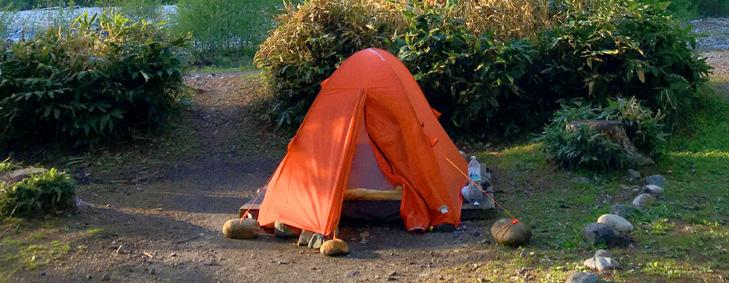
Japan's digital nomads Japan's digital nomads
INTERVIEW WITH RUTH AISLING
Photos by Ruth Aisling and Bappa Shota

Scenes of custom-built, cozy mobile homes with people gazing out at a stunning sunrise at the beach while sipping freshly brewed coffee has no doubt landed in your social media feed. “Van life” and camper van rentals have become especially popular during pandemic times as more people work remotely and actively avoid crowds while traveling domestically.
However, there are a few adventurous folks, like Ruth Aisling and Bappa Shota, who have completely embraced this minimalist, nomadic lifestyle and made their van their full-time home and office. This couple has been on the road since January 2020 and is currently making their way through Japan’s 47 prefectures in their converted Nissan Caravan. Outdoor Japan caught up with Ruth to talk about the perks—and not-soglamorous realities—of van life.
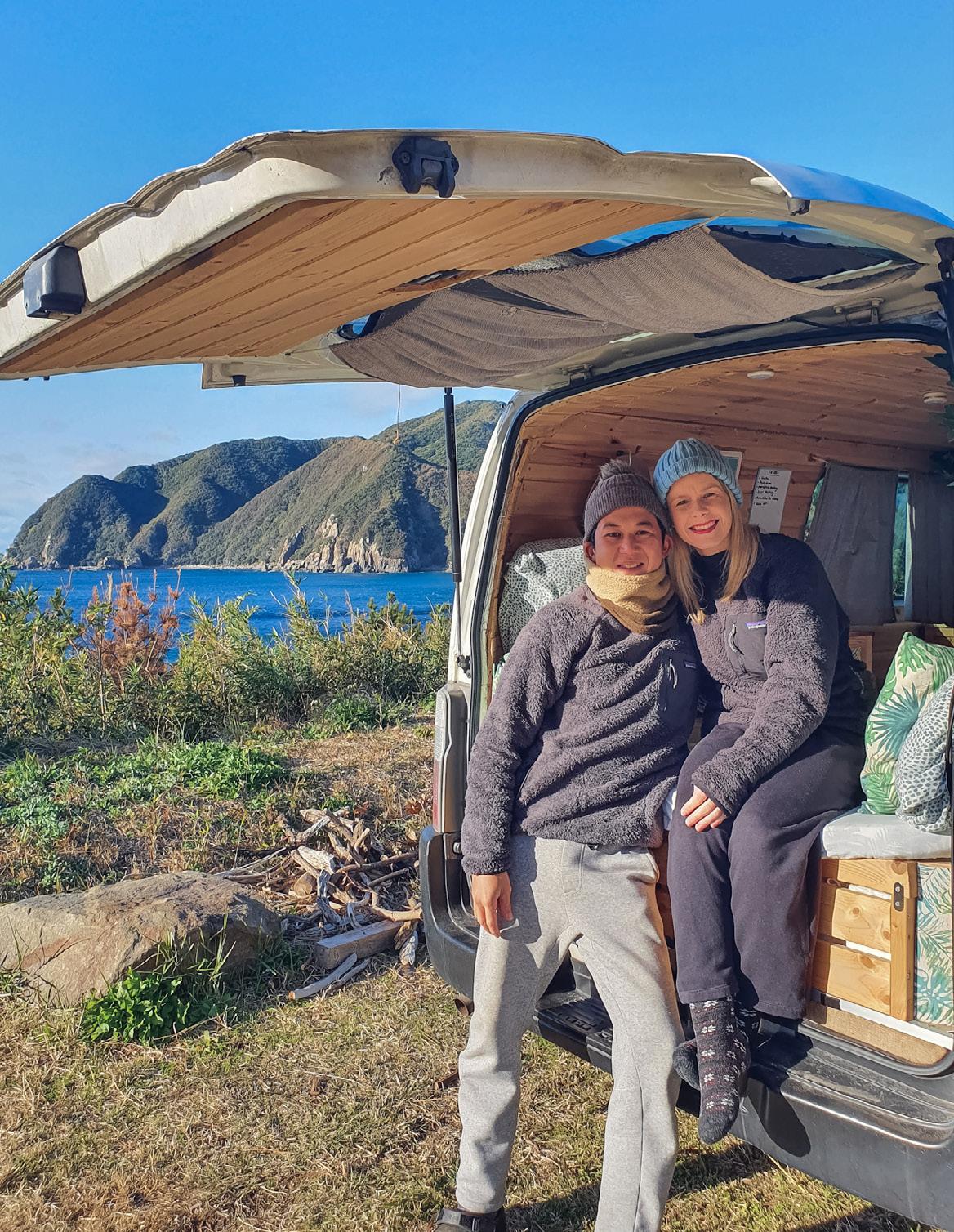
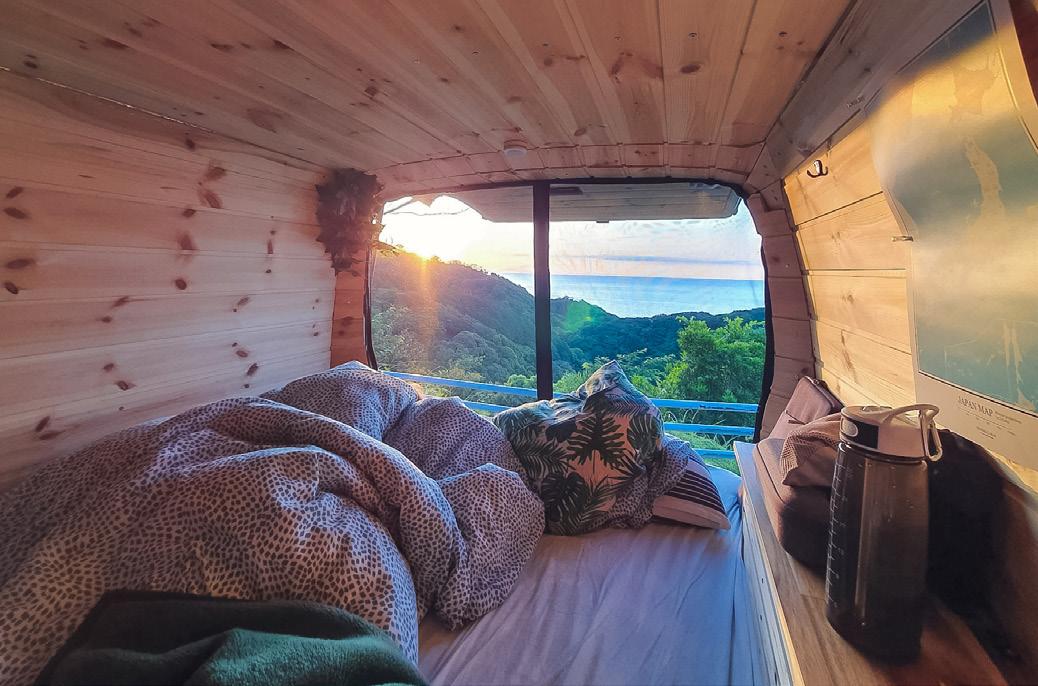

Rie Miyoshi: How did you get started traveling Japan by van? Ruth Aisling: My boyfriend Shota and I had been wanting to become digital nomads for a while. We’ve been working online since 2017 while living in Mexico, Scotland and a few other countries. I had worked a corporate job for six years prior, but in 2017, we started working on online businesses and a YouTube channel, which is our main focus now.
We decided to move to Japan in 2020 for a year. I’d been here twice before, once for a short trip to all the major attractions, and another time in 2017 for half a year traveling by motorbike throughout Japan.
This time, instead of staying in one location, we wanted to see other places and thought we could live in a van and travel while working online. We got the van in January 2020 and spent a month on renovations. RM: So right at the start of the pandemic. RA: We were so lucky we got here before borders closed or else we would have been stranded in another country and wouldn’t have been able to start our Japan journey. RM: Did you and Shota grow up spending time in the outdoors? RA: I grew up in Scotland, which is a great place for hiking and camper van travel. Both my parents are very adventurous. They like hiking and spent their honeymoon trekking the Annapurna Circuit. We camped a lot and had a caravan when I was younger.
Shota grew up in Himeji and he was interested in running and baseball. He left Japan when he was 19-years-old and spent a decade traveling the world and exploring deeper spots. RM: Did both of you have experience renovating a van? RA: When we started out, we didn’t have a big budget for the van so we got a 15-year-old Nissan caravan. We worked everyday for long hours. I didn’t have any DIY experience, but Shota had worked as a landscape gardener. He also did a working holiday in New Zealand where he had experience cutting wood and using the drill. We also watched a lot of YouTube how-to videos, like how to make a kitchen. Our van turned out better than we expected, and we’re so happy with the end result! RM: What are some of the best parts of living in a van? RA: It’s really nice to always have our “house” with us. We can make coffee any time and our clothes and gear are always with us so if we want to go, for example, hiking, all our hiking gear is here already.
Another thing I love about van life is waking up in a new place, whether it’s next to the sea, by a river or in the mountains. When we get tired of the view then we just head off somewhere else. We also get to explore off-the-beaten parts of Japan because we can take back roads to secluded mountain spots and find lovely spots to stay.
Thankfully our families and friends are really supportive of what we’re doing. As van life has become more common, especially during the last two years, we’ve had a lot of positive feedback. People are really interested in our van, especially if they see it from the outside—they want to see what it’s like inside.


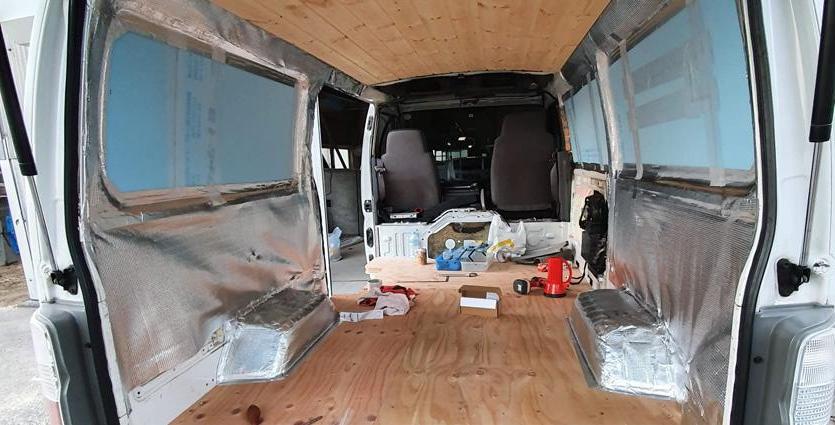
RM: What about the challenges? RA: A lot of people ask us, “How do you guys survive living in such a small space?” But we managed one year without killing each other! (laughs) A challenge many couples have when living in a camper van is giving each other space. So for example, one of us goes for a run or walk, and when needed, one person will rent a hotel or AirBnB for the night while the other one stays in the van.
We also have to be mindful of how much water and electricity we use. At home we have easy access to water and power, but on the road we have to constantly think about where we’re parked for the night and where to fill our water supply. We use solar panels to power our batteries. We also have to plan our exercise routine. There’s no shower in the van, so we try to exercise on days when we know we’re going to an onsen later.
Finally, the rainy season is the toughest season to van life in Japan. Everything gets soaked especially when we run out to use the public bathrooms (there’s no bathroom in the van) and it’s hard to dry towels and clothes. It’s also hard to get solar power. There are ways to overcome it, like recharging batteries at cafes or using dryers at the onsen. If it rains for one or two days, it’s manageable, but constant rain for four or five days is tough. RM: What do you do when the weather gets too extreme? RA: The camper van can get really hot in summer. But the good thing is Japan is a long country and the climates are so different between the north and south. So in summer, we head north: this year we’re heading up to Tohoku. When it gets too cold, we head south. Last year, we went to Kyushu.
It still gets pretty hot in summer regardless of where we are, and we don’t have air conditioning in the van because it would use too much power and hurts the environment. So we have mosquito nets and a fan and leave both doors open, which feels really cooling especially when we’re near the sea. RM: Where are you currently calling home? RA: We’re in Toyama Prefecture now, waiting for the weather to clear up so we can hike Tateyama. RM: How long do you usually stay in one location? RA: It depends, for example we’ve been at this campsite for five days now. On sunny days, we’re usually doing something outdoors and filming for our YouTube channel. On days in between, we’re researching where to go next and stay that’s close to an onsen and supermarket. We also catch up on editing and other work. RM: Japan is a pretty safe country, but have you encountered any weird or dangerous situations? RA: Like you said, Japan is very safe. No one’s ever tried to open the van at night or broken into our van, which I’ve heard stories of in other countries. If anything, it’s the animals. We stay at a lot of rural campsites and there are always warning signs about bears and snakes. We always have bear spray and bells.
The only time we encountered bears though was in Shiretoko while we were driving. We saw three bears crossing the road. We’ve encountered a few snakes at campsites, especially in Okinawa where there are lots of habu (pit vipers) around. RM: What’s your favorite place you’ve traveled to so far? RA: Last summer we spent four months in Hokkaido. Hokkaido in summer is van life paradise! There are a lot of free campsites, amazing driving routes, outdoor onsens and delicious food. I also enjoyed Tokushima. We were there for three months as we got stuck there because of the state of emergency. We explored the Iya Valley a lot and I’d love to go back in autumn when the leaves change color. We’re also aiming to climb the Hyakumeizan (One Hundred Mountains of Japan), so I’m really looking forward to Nagano as a lot of the Hyakumeizan mountains are there.
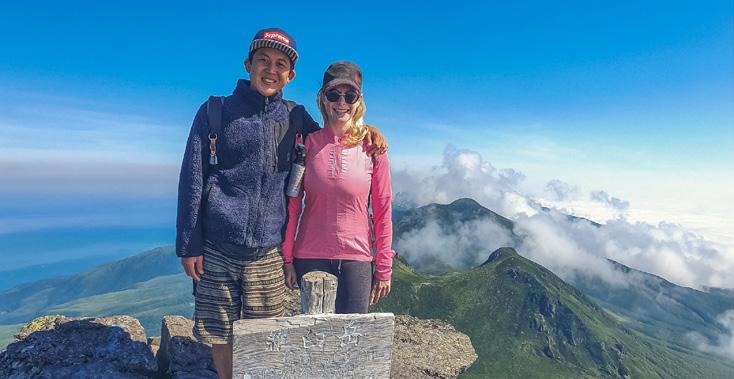



RM: How did you manage to get your van to Hokkaido and Okinawa? RA: It’s actually pretty easy to bring your vehicle to Hokkaido. There are vehicle ferries from Niigata and Kyoto—we sent ours from Kyoto for around ¥40,000. It took 24 hours.
Sending your vehicle to Okinawa is a bit more difficult. We took the ferry from Kagoshima to Naha. When we sent the van to the other islands like Miyakojima and Ishigaki, we used a house moving company so we can’t ride the ferry with the van as it’s in a shipping container. The process is all in Japanese. RM: I noticed you call your van “Toni” in your YouTube videos. What’s the story behind the name? RA: When we first got our van, we knew we wanted to give our van a name but weren't sure what name to choose. While working on the conversion, we were looking at the number plate. Japanese number plates usually start with a letter followed by some numbers. Our number plate started with the Japanese hiragana character と (to) followed by the number two which is に (ni).
When combined together, the first two characters read as “Toni” and the name for our van was born! RM: What advice do you have for someone interested in van life? RA: The number one thing I always tell people is that if you’re interested, rent a camper van first and see if you like it. It’s not for everyone and you can’t bring a ton of luggage.
Shota and I were already living minimally as we were constantly traveling. But you really just need one of each thing when you travel: one pair of hiking shoes, one pair of sandals, a rain jacket and so on. So just focus on one thing.
To save space in the camper van, we also store some clothes at Shota’s parents’ house. In summer we have one wardrobe, then when the season changes, we send back those clothes and Shota’s parents send us our winter clothes package. RM: What’s the biggest thing you’ve learned through van life? RA: I learned a lot living off the grid and having a minimal impact on the environment. It’s hard to find places to throw trash away in Japan, which made us conscientious about how much trash we create. We also rely on solar power: the solar panels on the roof of the van are connected to portable batteries. Once they’re charged, they can last about four days. Even if it’s a little bit cloudy, we can get some solar energy and the batteries will charge by themselves. RM: What are your future van life plans? RA: Van life will always be a part of our life, but I don’t think we’ll live in our van forever. At the moment our main goal is to visit all 47 prefectures and experience them at a deeper level, spending two to three weeks at each prefecture instead of rushing through. We’re still on our 10th prefecture so we still have a way to go, probably another year or so. We already traveled Hokkaido and Okinawa which are quite big ones, so we’re currently back on Honshu and focused on that for the rest of the year. After that, we’re not sure yet! v

Follow Ruth and Shota’s van life journey across Japan on their YouTube channel, Bappa Shota, their blog, bappashota.com and Instagram at @RuthAisling and @Bappa.Shota.
Iriomote's Endangered Wildcats
BY RIE MIYOSHI

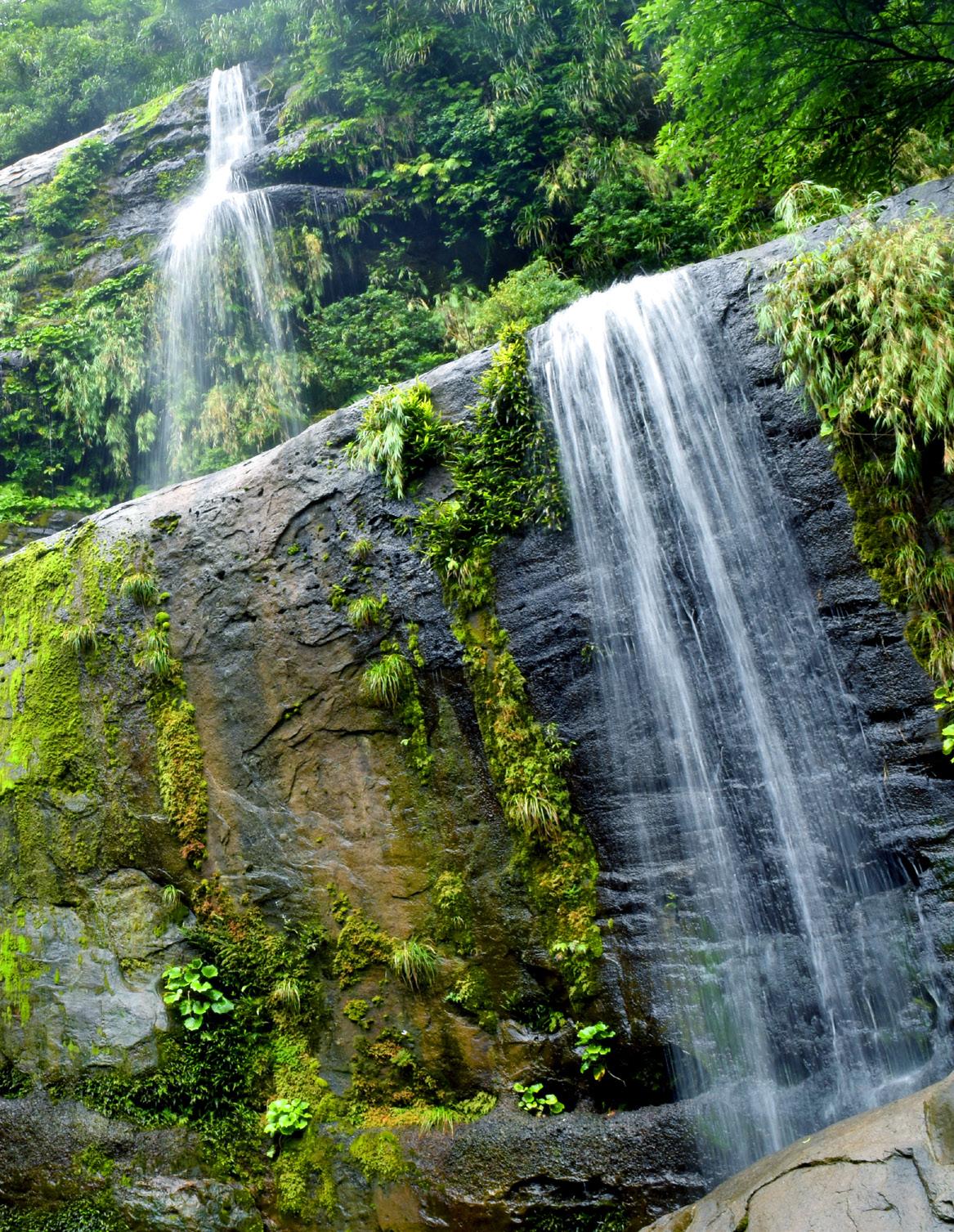

Photo by Iriomote Wildlife Conservation Center

IRIOMOTE ISHIGAKI
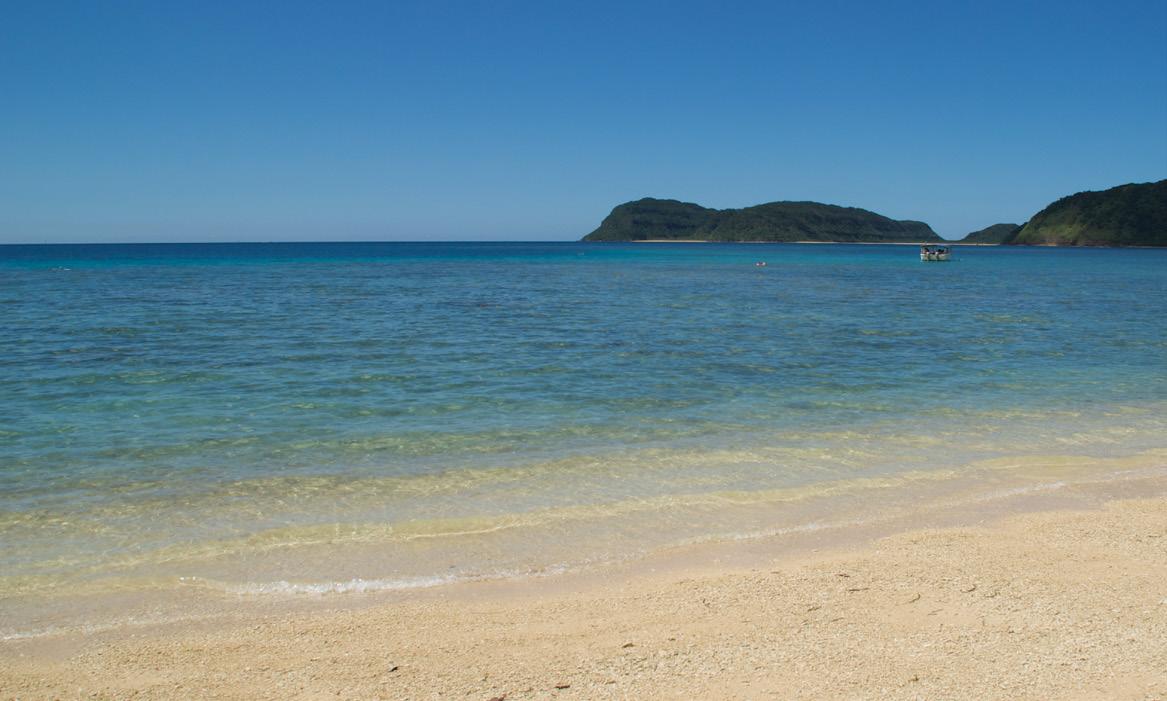
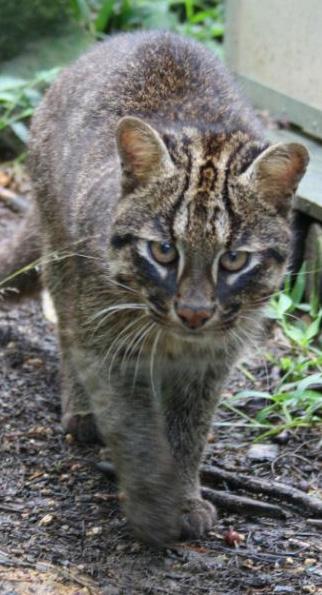
Making international travel plans these days is complicated—if not impossible—but if you want to go somewhere that feels foreign without leaving Japan, Okinawa’s Iriomote Island, with its lush rainforests, makes for an unforgettable eco tourism destination. It’s here that you can hike through the jungle with a chance to run into Iriomote’s critically endangered wildcats.
Iriomote is a 289-square-kilometer island that lies to the west of Ishigaki. It’s home to 2,400 residents and is 90% rainforest. It remained largely untouched until the end of World War II as it was a hotbed of malaria (it has since been eradicated) and often lies in the path of typhoons. Today it is part of Iriomote-Ishigaki National Park, Japan’s southernmost national park known for manta ray diving, vast mangrove forests and tropical beaches.
Iriomote is also the only place in the world where you can find the Iriomote yamaneko (mountain cat), a wild cat endemic to the island. This cat is a subspecies of the leopard, but no larger than a domestic cat. It is characterized by white spots behind its round ears, white fur around its eyes, a large flat nose and a fat tail.
It’s said that the land was originally separated from the Eurasian Continent and with it came the cats. Since this carnivorous cat has spent 90,000 years in isolation without other small mammals, it evolved to feed on a wide variety of creatures such as lizards, snakes, frogs, crickets, fruit bats, birds and freshwater prawns. Feeding on a diverse range of prey is a unique characteristic only seen in Iriomote cats.
The yamaneko was academically recognized in 1965 by an ecologist named Yukio Togawa who followed rumors of a wildcat in Iriomote.
“After discovering the wildcats, two of them were kept for research purposes at our house for around twoand-a-half years at the request of the Japanese government,” remembers Kumi Togawa, Yukio’s daughter. “I was a child then, but I remember they were very wild and completely different from domestic cats. They always hissed at me when I approached them. They also had a “wild” odor, the kind that you smell at the zoo. When my father brought them food, they warmed up to him, and so he and his trusted assistant became the only ones who could take care of them.”

Photo by Iriomote Wildlife Conservation Center Photo by Taketomi Tourism
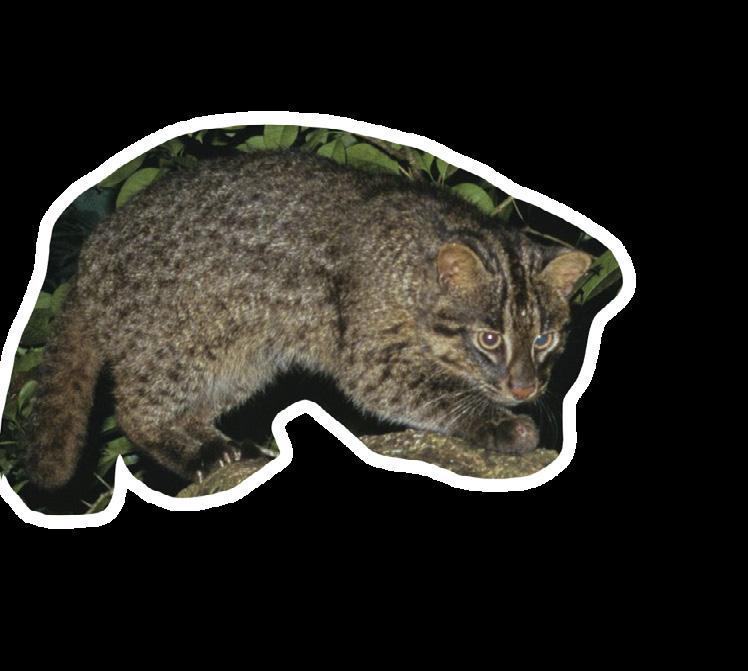
Photo by Iriomote Wildlife Conservation Center Photo by Taketomi Tourism
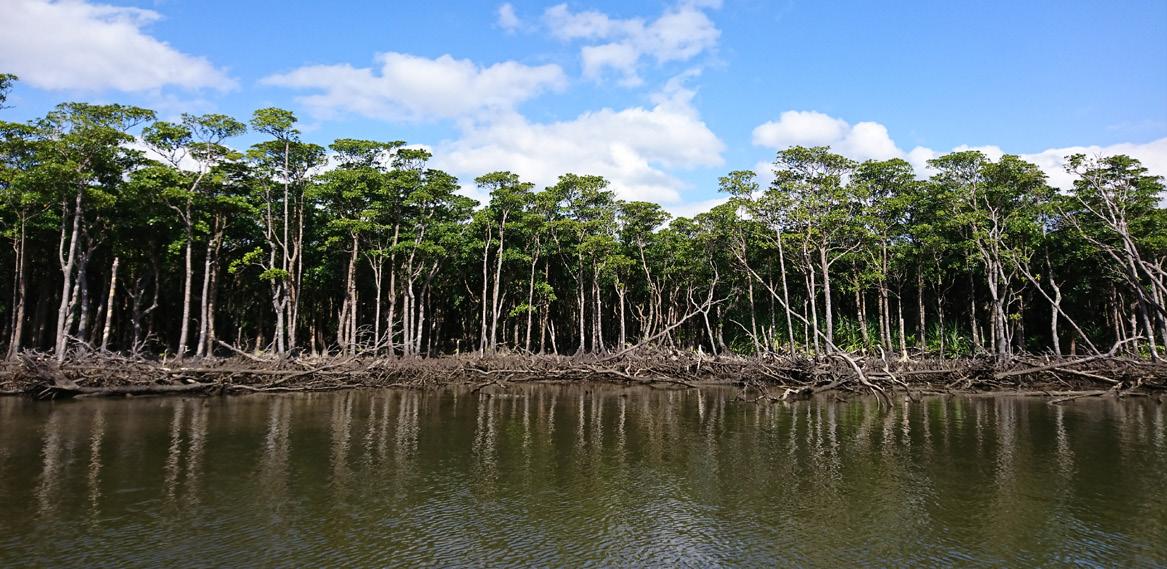
Scientists the world over were thrilled about this new discovery—the fact that a wild cat could inhabit such a small island was a miracle in itself—and various steps were made to relocate residents to preserve space for this cat. Naturally, the locals held mixed feelings: pride over their island and resentment at the wildcat being prioritized over their livelihood. Thankfully they were able to reach a happy medium as researchers found that wildcats and locals could peacefully coexist.
Today most development is on the eastern coast of the island. There are two main villages: Ohara and Uehara, which are connected by one road. Other coastal villages can only be reached by boat. While there is just one major road on Iriomote, in recent years the growing traffic from resort development has resulted in unsuspecting cats being hit by vehicles, while careless agriculture practices have destroyed habitat, which has impacted their feeding and breeding grounds.
The wildcat has been on the International Union for Conservation of Nature Red List of Threatened Species since 2008 and there are currently only 100 to 150 cats left on the island. Contrary to the domestic cat, yamaneko only live seven to eight years in the wild and give birth annually to only one or two kittens at a time. They are mostly nocturnal and especially active at dawn and sunset.
Iriomote, along with Amami Oshima, Tokunoshima and the Yanbaru Region in Okinawa mainland, is expected to become Japan’s newest UNESCO World Natural Heritage Site in the summer of 2021. It’s predicted that visitors will double to a worrying 700,000 within three years. As it stands, more travelers visit Iriomote annually than other World Natural Heritage Sites across Japan— more than even Ecuador’s Galapagos Islands.
Non-profit organizations such as the Japan Tiger and Elephant Fund (JTEF) started by Kumi Togawa are taking measures to protect the wildcat.
“All living things are constantly evolving, so we should not stop that process,” says Togawa. “The species JTEF works on conserving are all endangered, and I want them to stay on this planet forever. Conserving them means conserving our planet.
Initially we started this NPO to protect tigers and elephants in India. In 2019, we included Iriomote wildcats to this list as I wanted to fulfill my father's wishes that Iriomote’s rich nature and its many creatures, including the wildcats, would remain safely.”
JTEF’s Roadkill Prevention Program conducts a night patrol of the main road every evening to remind drivers to slow down.
“Every year the number of wildcats getting hit by car increases. Our team of around 20 volunteers work to remove small frogs and birds on the road that have been run over, so that they don’t attract wildcats to the roads,” says Yusuke Takayama, who is based in Iriomote. “We also analyze traffic data and regulate speed limits. We use this data to conduct environmental and educational workshops with local schools so that we can all work together to create a safer environment for the cats.”
Additionally, they assess the impact of development projects and take on an advisory role to regulate the number of visitors entering the island.
Us 4 Iriomote spearheaded by footwear company Keen is another organization that works on educating travelers on visiting Iriomote responsibly and partnering with local environmental awareness programs. They also started the Yamaneko 530 Art project to encourage travelers to pick up plastic trash they find and put it in a special designated box. This summer, they will be releasing “Us 4 Iriomote: the Movie,” a short documentary directed by Choji Nakahodo, who is from the neighboring Ishigaki Island. The Ishigaki-bornand-raised photographer grew up surrounded by nature. He developed a passion for nature photography while working in tourism photography in his 20s on Okinawa’s main island.
“This film is about how nature, tradition and culture influence everyday life in Iriomote,” says Nakahodo. “I hope it evokes a sense of wonder in the people who watch it, and that they too will want to experience Iriomote for themselves.”
The movie will be released in July 2021 and available to view at us4iriomote.org/movie.v

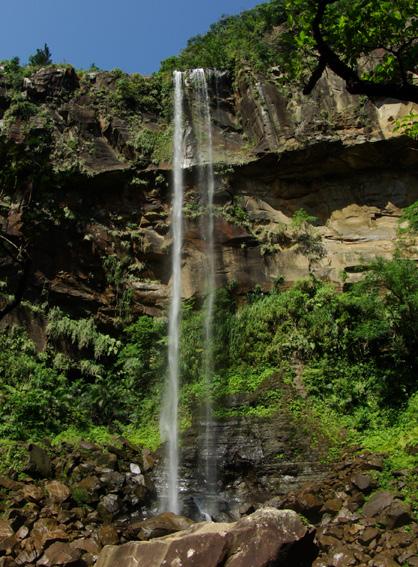
Photo by Taketomi Tourism Photo by Taketomi Tourism
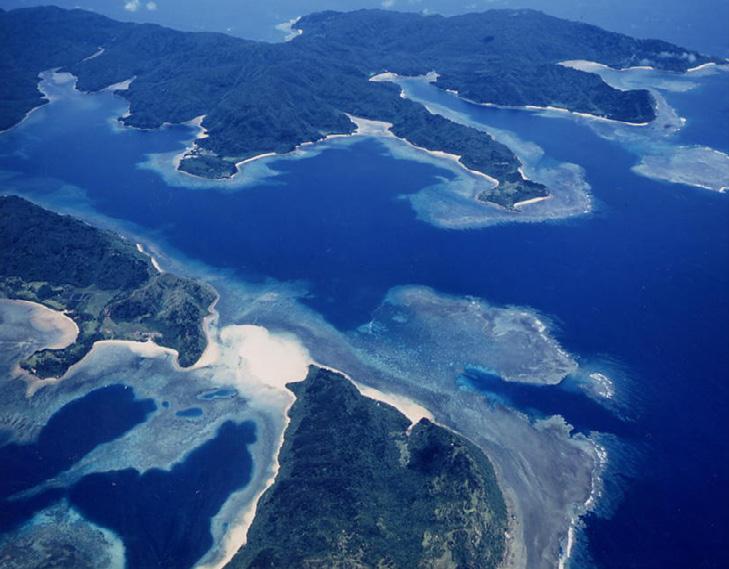

HOW YOU CAN HELP
・ Drive slowly if you choose to rent a car. ・Stay on designated tracks when hiking and exploring the forest. ・ When hiking avoid strong flashlights unless it is absolutely necessary. ・ Do not attempt to feed or set up feeding traps for animals. ・ Do not bring in alien species or release pets as they will become an invasive species. Escaped goats have become a pest in the past few years. ・ Do not remove or take nature and rare species home. ・ Do not move creatures from the location you find them. ・ Travel responsibly. Be respectful of the locals, nature and don't litter.
IRIOMOTE WILDLIFE CONSERVATION CENTER
This informative center primarily focuses on conservation of the yamaneko , complete with a taxidermy mount and skeleton specimens. Displays explain environmental protection efforts and exhibits on Iriomote's natural history and ecosystems. Admission is free. Web: iwcc.jp
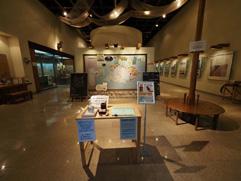
Photo by Iriomote Wildlife Conservation Center
GETTING THERE
The best way to get to Iriomote is by flying into Painushima Ishigaki Airport on the neighboring Ishigaki Island. Most travelers combine a trip to both of these islands, or base themselves out of Ishigaki and take day or short multi-day trips to Iriomote and the other surrounding islands.
There are two ports on Iriomote: Uehara to the north (40 minutes from Ishigaki) and Ohara to the south (35 minutes from Ishigaki). Ferries are approximately ¥3,500 round trip per person. v
For more information on what to do in Iriomote, go to
OutdoorJapan.com.

HONEY BUSINESS HONEY BUSINESS

BY GARDNER ROBINSON
Children in Japan love bugs. Pairs of kids running around neighborhoods with insect nets and clear plastic boxes hanging around their necks is not an uncommon sight each summer. Growing up in Kumamoto, Akinori Kai was no different. What sets him apart is he turned his passion for bugs into a buzzing business—the Kodo Bee Farm in Tokushima.
The Yoshinogawa flows deep through the mountains in Tokushima Prefecture, meandering through small towns and rice fields and squeezing through beautiful gorges. The river finally reaches the sea where nearby beaches famously attract surfers. It’s a beautiful natural environment and a place where traditions such as indigo tie dye fabrics and awa dancing in summer can still be found.
Akinori Kai spent a lot of time outdoors growing up in Kyushu. When he graduated from university he worked at a sporting goods store for a year and a half, but realized he wanted to be in the outdoors, not working in a shop.
“I really love all kinds of insects so after I quit the sports shop, I looked for a job related to insects. My first option was a silkworm farm, but business didn’t seem very good so I started to learn about beekeeping,” he says.
Aki found a job with a large beekeeping company in his hometown in Kumamoto. He worked there for a year and then did beekeeping in Hokkaido for four months before setting up his own apiary in Tokushima: Kodo Bee Farm.
Every year the Yoshinogawa spills over into the low fields creating rich soil and spreading wild flower seeds. Honeybees thrive in this environment.
“The floods can also destroy the beehives so I must move mine from the riverside to the mountains before flood season each year. The river is a risk and reward for me and other farmers—like the Nile River in ancient Egypt. It’s an unpredictable and beautiful natural place,” he says.
He studied English in the Philippines to prepare himself for travels abroad to do research and learn new beekeeping techniques. “Malaysian and Russian beekeeping was particularly interesting,” he says. “I need to go again.”
He’s also found a way to bring the world to him in Tokushima where he regularly hosts volunteers who come to learn about beekeeping and help out with the easier tasks like harvesting honey. It’s also important to check inside of the hives and make sure the queen bee is healthy so colonies are growing.
“Visitors seem to enjoy their time here because beekeeping is such an unusual thing for most of them,” he says.
Kodo Bee Farm keeps more than 150 colonies of European honey bees in Tokushima, which he manages by himself and with two or more volunteers. The main job is taking care of all the bee colonies that produce the honey, which he sells at about 60 supermarkets, mainly in Osaka.
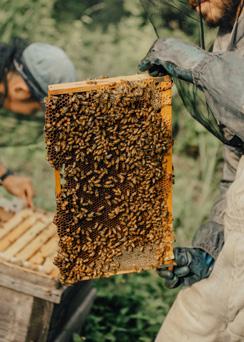
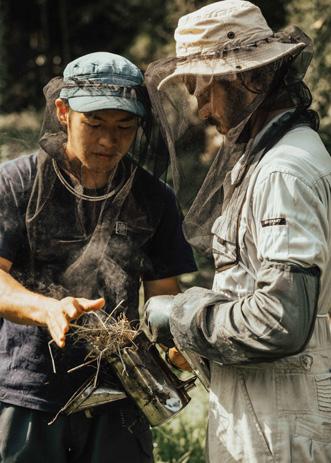
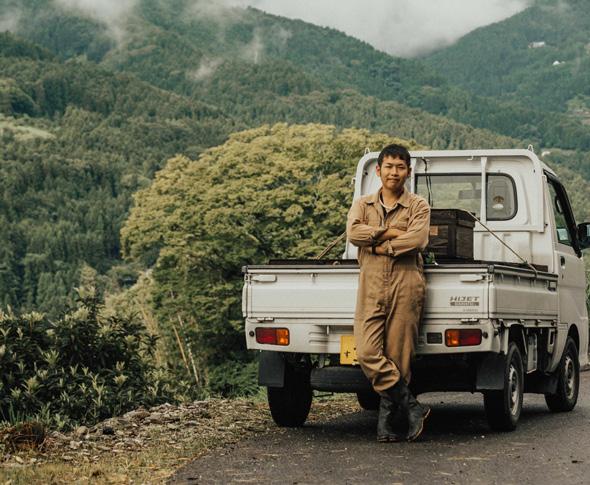



“One bee colony contains around 10,000 worker bees, and I have more than 150 colonies. So I’ve got about 1,500,000 workers. Sounds like a big company, don’t you think?” he jokes.
While it sounds like a lot of bees, many farmers in Japan want to buy bee colonies, but there simply aren’t enough on the market. Demand is much larger than supply right now.
Kodo’s European bees are Italian. Most beekeepers around the world favor Italian bees because they are great at producing honey. When working with the bees he usually wears a jumpsuit and net, which protects his head. Nearly all beekeepers also wear gloves to avoid getting stung on their hands, but Aki chooses to forgo the protection.
“I work faster barehanded,” he states. “Yes, I usually get stung more than 10 times each day, but it doesn't bother me anymore. It’s my job.”
It took a while for him to get used to the stings. When he first started, his hands swelled up like balloons each day. His co-workers at his first beekeeping company required him to keep working even when his hands hurt. This was difficult for a novice he remembers, but the experience made him a tougher beekeeper.
“Kodo" ( 黄 道 ) means 'ecliptic.' Bees are constantly locating the sun in relation to the ecliptic plane to determine the direction to the flower fields, and they share the information with other worker bees.
“It is amazing these small insects have such an advanced brain and communication system. I was so impressed by this, I named my business Kodo Bee Farm,” he says.
Bees are incredibly important to the health of local ecosystems. Strawberries, tomatoes, melon and many other fruits and vegetables rely on pollination to grow. Flowers and plants naturally increase in local environments where bee colonies are present. And it doesn’t hurt to have access to fresh, delicious honey.
Tokushima has many hidden gems for active travelers. There’s great hiking on Mt. Tsurugi, whitewater rafting on the Yoshinogawa and cycling and motorcycling in the Iya Valley. Kodo Bee Farm is helping add to the natural beauty of the area and travelers interested in learning about bee farming can contact Aki by e-mail, through Kodo Bee Farm’s Facebook page or visit his Workaway page to volunteer. May, June, September and October are the busy seasons for harvesting honey. v
KODO BEE FARM
( 黄道ビーファーム )
Location: Awa-shi, Tokushima E-mail: sorao8009@gmail.com Facebook: facebook.com/kodobeefarm Workaway: workaway.info/en/host/953743428324

EatingWildin Japan

BY JOAN BAILEY
Winifred Bird wants you to eat outside. While this admonition may not seem odd (who doesn’t love a picnic, after all?), Bird, the author of Eating Wild Japan: Tracking the Culture
of Foraged Foods, with a Guide to Plants and
Recipes (Stonebridge Press, 2021) has something more literal in mind.
“This book is very much about humans as part of the natural world and our relationship to it,” says Bird. “Now, it is so much more fun to go somewhere because I am constantly looking for plants I can eat. It makes me feel much more connected to the places I go.”
Bird’s first introduction to the world of sansai (mountain vegetables) was at the table of a neighbor over a shared pot of tea in Matsumoto, Nagano Prefecture. Subsequent visits featured an everchanging sansai menu “always perfectly tuned to the turning seasons,” she writes. As Bird talked and ate and the friendship bloomed, she realized that in rural Japan these wild foods were commonplace. It began a subtle shift in her thinking and way of seeing the world.
“I started thinking that when people are eating and using a plant, they protect it over the centuries and have a reciprocal relationship with it,” she says, “It's a sort of nurturing one another through time. When that relationship falls apart, though, oftentimes the plant meets an unhappy fate as people lose their stake in it.”
This sense of reciprocity captivated Bird along with the simple delicious foods she and her neighbor shared. She first learned of this give and take between humans and the environment through the the work of Robin Wall Kimmerer, a scientist and an enrolled member of the Citizen Potawami Nation. How, she wondered, had these plants shaped the culture and cuisine of Japan? What did they say about people’s relationship to the land?
Searching for answers to these questions propelled Bird into the mountains and forests and even along Japan’s rocky shores to forage alongside those still practicing these skills and maintaining this ancient relationship. The result is a richly woven depiction of the social, culinary, economic and natural history of Japan that these plants represent.
“When I worked as a journalist, I often had to define things in terms of economy or art or the environment,” she says, “but those divisions don’t reflect the world as it actually exists. All these things are completely integrated, and you can't understand any of them without understanding the others. So, I wasn’t interested in just botany. I was interested in the relationships between people and plants.”
Like every relationship, though, Bird also found that sansai provided more than bucolic forest walks or delightful nibbles on Heian Period warabi (bracken fern) mochi. These plants allowed people to survive famines or fickle weather that dictate mountain life. To that end, a countless array of wild plants were managed, fostered and eaten for thousands of years throughout the seasons to ensure food security.
“Having a culture that values—and is dependent on—wild foods drawn from its own ecosystem over the course of hundreds and thousands of years, where people actually have to sustain it, encourages them to value diversity. You have to have a variety of things through the seasons in different habitats.”
While Bird acknowledges she only covers a small fraction of the plants available, she hopes the recipes in each chapter and the guide to 25 of the most easily found sansai inspire readers to eat, ponder, and see their environment in a new light— not as something separate but a world they are part of and have a deeper relationship with than even hiking, skiing or surfing.
“Food is so much more than a hobby, something to entertain ourselves with,” Bird says. “By being aware of where we are and eating locally like this, we have a stake in protecting the land and maintaining its diversity. I hope my book will make people think not only about Japan, but also how we relate to land, use and interact with it.”







